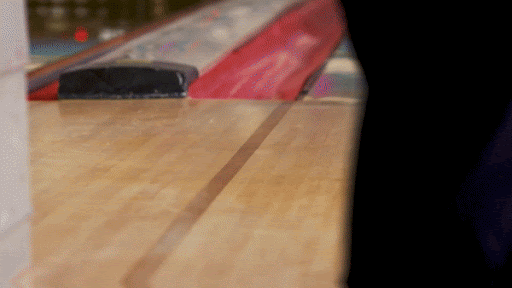
Two-Handed Bowling: Pivot Step
Scott PohlDescription
In this free video, Scott Pohl, owner of On Track Pro Shop, explains how the pivot step (aka power step) works within the two-handed bowling game.
The Pivot Step
The step before the slide is the pivot step or power step. Typically, this step is short and fast for two-handed bowlers. At this point in the approach, the ball needs to be at its highest point in the backswing to be considered in time.
Specifics
Acceleration is created going into the slide allowing for the hips to rotate going into the release. This is a key component to create a powerful release with good leverage. When compressed, the pivot step foot for two-handed bowlers can be anywhere angled somewhere between 40º – 90º.
A bowler’s height and the height of their backswing determine the positioning of the pivot step. When timing is off, you will see less leverage and weaker ball reaction. You could also see your ball miss the target left because you pulled it.
Again, good timing is a requirement for hip rotation leading to a balanced finished position and a good release in the two-handed game. Errant shots will occur when your timing is off. The pivot step, in time with the height of the backswing, will tell a big part of the story when you question, “what happened with that last shot?”
Check out “Two-Handed Bowling: Footwork” and “Two-Handed Bowling: Timing” for more expert instruction.
Hi there, Scott Pohl. I'm a contributor with the National Bowling Academy. And what we're gonna take a look at is the two handed bowling game, in particular, what is called, the power step or the pivot step. A definition we know when the foot is compressed, meaning a pivot step, step before the slide, the height of the bowling ball is basically at its peak in the back swing. This allows for maximum power.
All right. So here we have Jeff showing his power and pivot step, and you can see the compression of his pivot step happens when the ball is at the height of the swing. This allows him to stay underneath the ball with maximum leverage. All right, so there you have it. We looked at the power step and the pivot step, a very crucial part of two handed bowling.
It creates a lot of power and ways of striking with a lot of emphasis on revolutions. I hope all this helps, be sure to get out on the lanes, work on your power step, pivot step, you'll score a lot higher.

Share tips, start a discussion or ask other students a question. If you have a question for the instructor, please click here.
Already a member? Sign in
No Responses to “Two-Handed Bowling: Pivot Step”